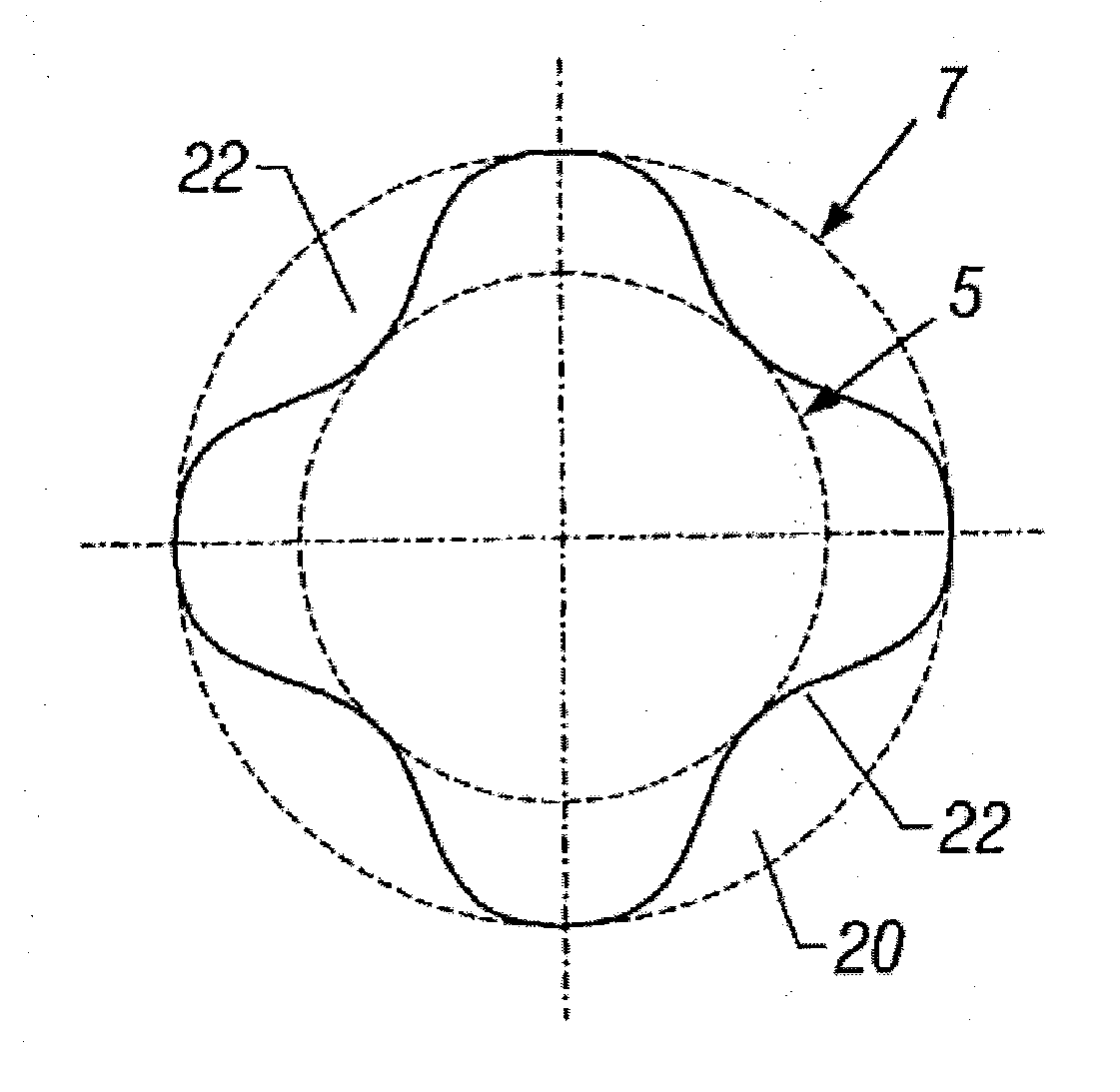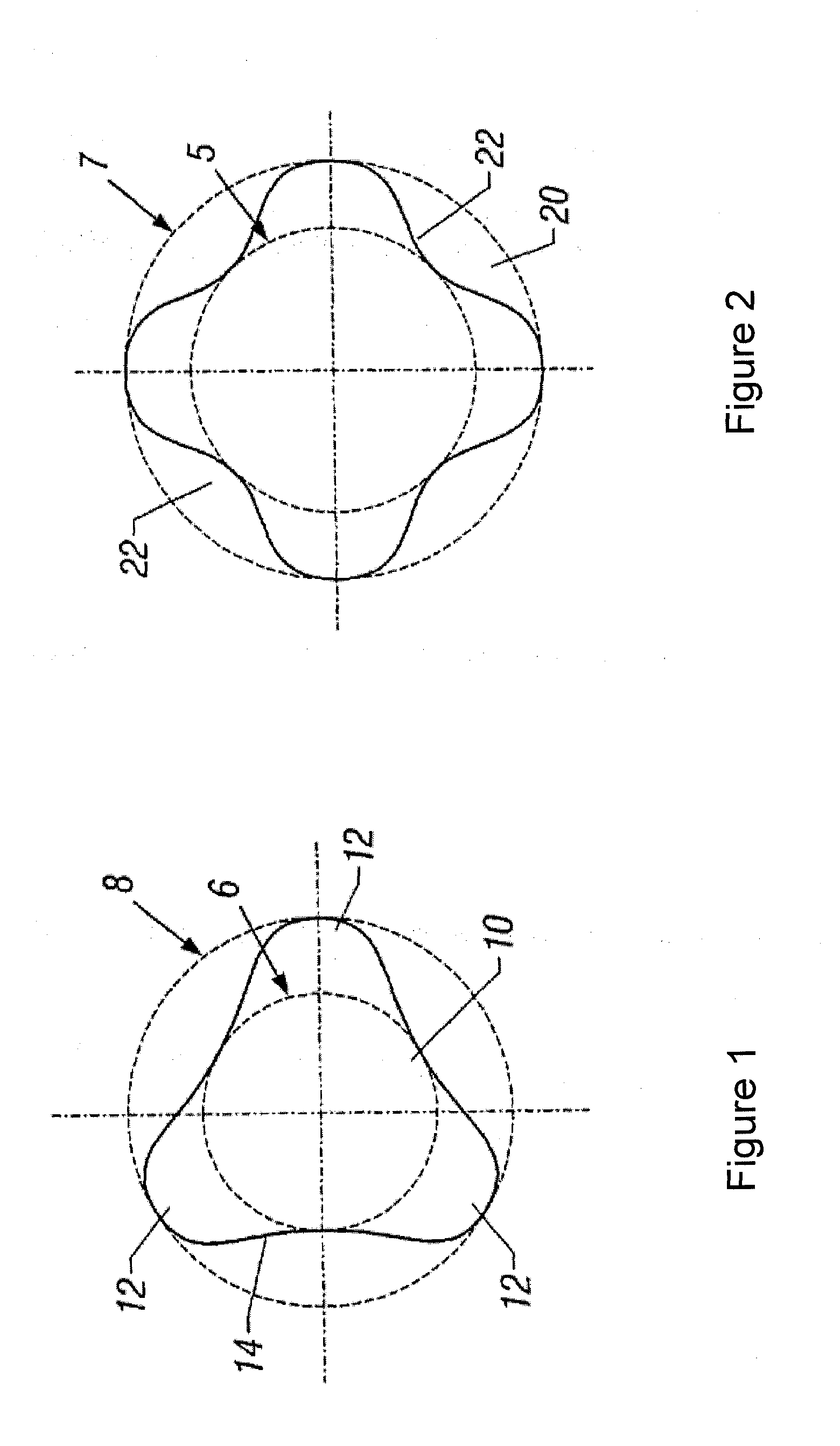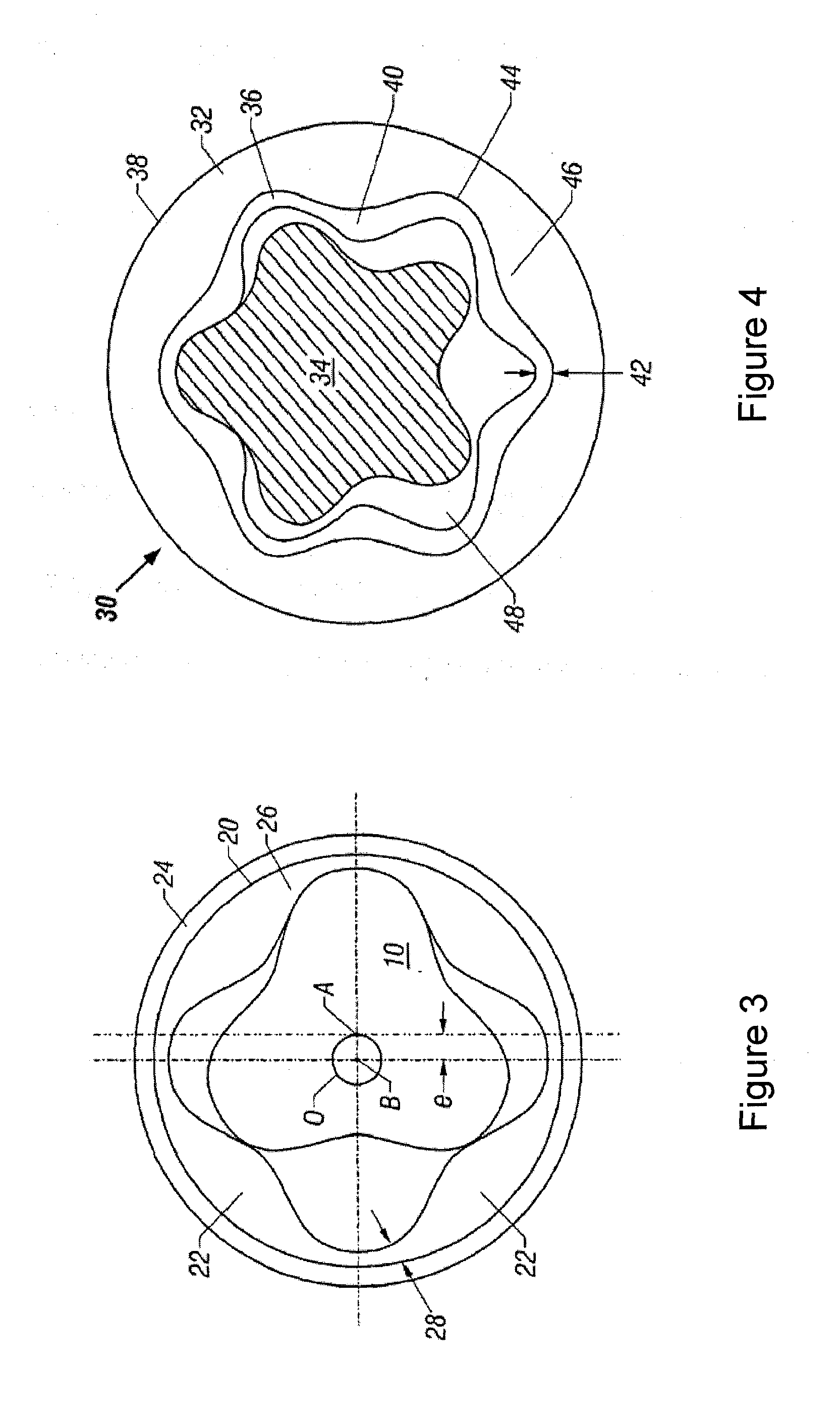Fiber Reinforced Elastomeric Stator
a technology of elastomeric stator and fiber, which is applied in the field of stator, can solve the problems of increasing the work load, high temperature, and the difficulty of injection molding elastomer materials at such lengths, and achieves the effects of improving the processability and dispersion of fibers, improving the interaction of fibers with the elastomeric matrix, and improving the processability of admixture and incorporation of a limited amount of fibers
- Summary
- Abstract
- Description
- Claims
- Application Information
AI Technical Summary
Benefits of technology
Problems solved by technology
Method used
Image
Examples
examples
[0061]
TABLE 1Formula 1Formula 3(comparative)Formula 2(comparative)Polymer100100100Carbon Black909075Plasticizer20202040% Fiber predispersion0415Curatives5.55.55.5Activators111111Total226.5230.5226.5
TABLE 2Formula 1Formula 2Formula 3ASTM D412-06Tensile (psi)210019001300Elongation (%)30025070Mod at 25%200800800ASTM D624-00260230230Tear Die C Tstrength(lbf / in)Tstrength (lbf / in) after 72200220hr water immersion at300° F.ASTM D395 (22 hrs at353765250° F.)Compression Set %ASTM D429 90 degree90120Adhesion Peel (lbf / in)Adhesion Peel (lbf / in) after153072 hr water immersion at300° F.RPA (30 mins at 300° F.)ML0.290.29MH1515
[0062]Table 1 is a side-by-side formulation comparison, on the basis of adding the fibers into the same formulation with equal total phrs, Formula 1 (comparative example, typical of commercially available stators) has no fibers, Formula 3 (comparative example) has about 6 phr aramid fiber (predispersed in amorphous silicon dioxide); and Formula 2 (according to embodiments he...
PUM
| Property | Measurement | Unit |
|---|---|---|
| particle size | aaaaa | aaaaa |
| length | aaaaa | aaaaa |
| temperatures | aaaaa | aaaaa |
Abstract
Description
Claims
Application Information
 Login to View More
Login to View More - R&D
- Intellectual Property
- Life Sciences
- Materials
- Tech Scout
- Unparalleled Data Quality
- Higher Quality Content
- 60% Fewer Hallucinations
Browse by: Latest US Patents, China's latest patents, Technical Efficacy Thesaurus, Application Domain, Technology Topic, Popular Technical Reports.
© 2025 PatSnap. All rights reserved.Legal|Privacy policy|Modern Slavery Act Transparency Statement|Sitemap|About US| Contact US: help@patsnap.com



